The AP Environmental Science Cheat Sheet for 2024 offers a concise overview of essential concepts and key terms to help students excel in the AP exam. This guide covers six fundamental units: Ecosystems, Biodiversity, Populations, Earth Systems & Resources, Land & Water Use, and Energy Resources & Consumption. Each unit breaks down crucial topics such as ecological relationships, biomes, nutrient cycles, population dynamics, geological processes, sustainable practices, and energy types. Use this cheat sheet as a quick reference to reinforce your understanding and ensure you’re well-prepared for the exam.
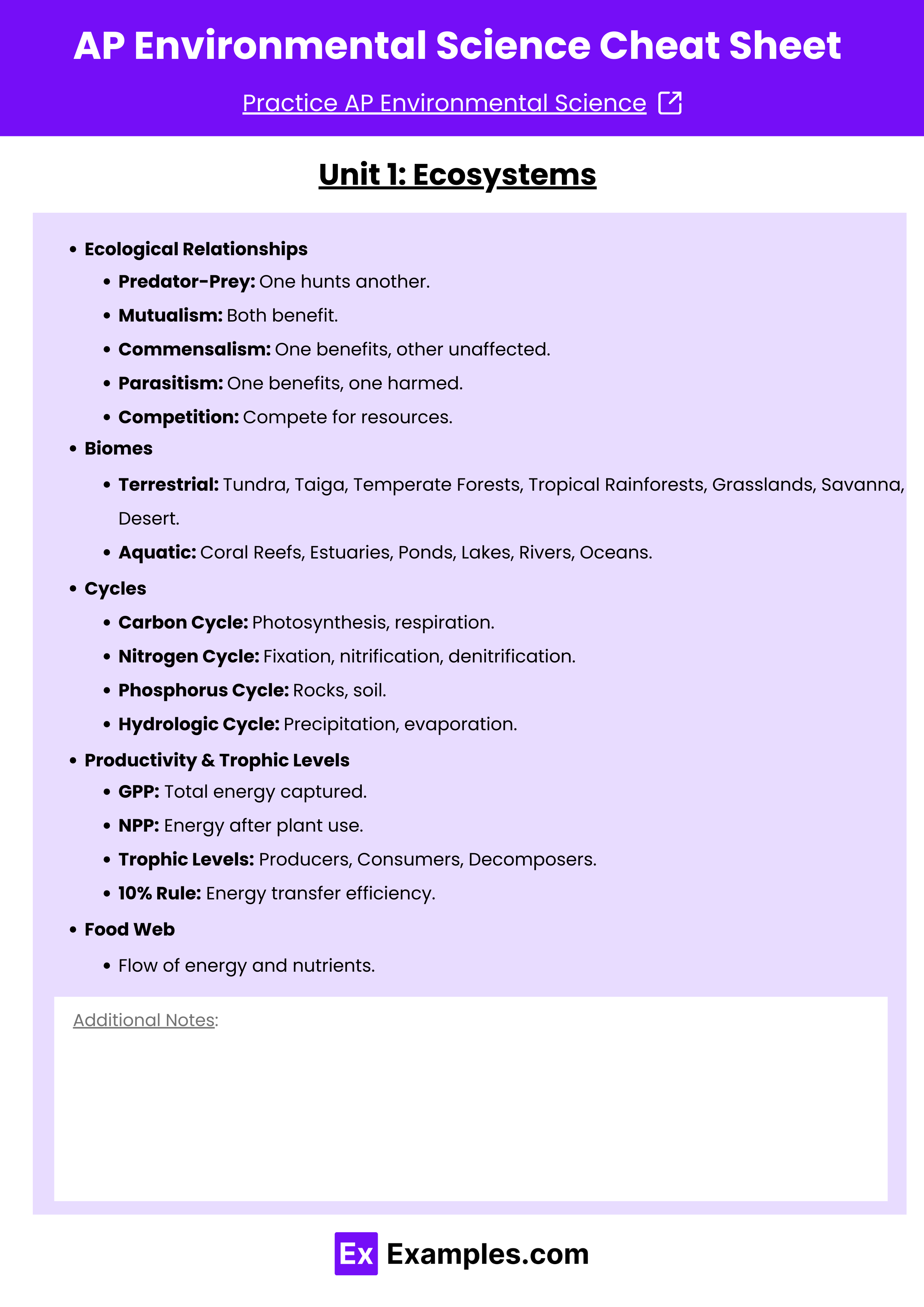
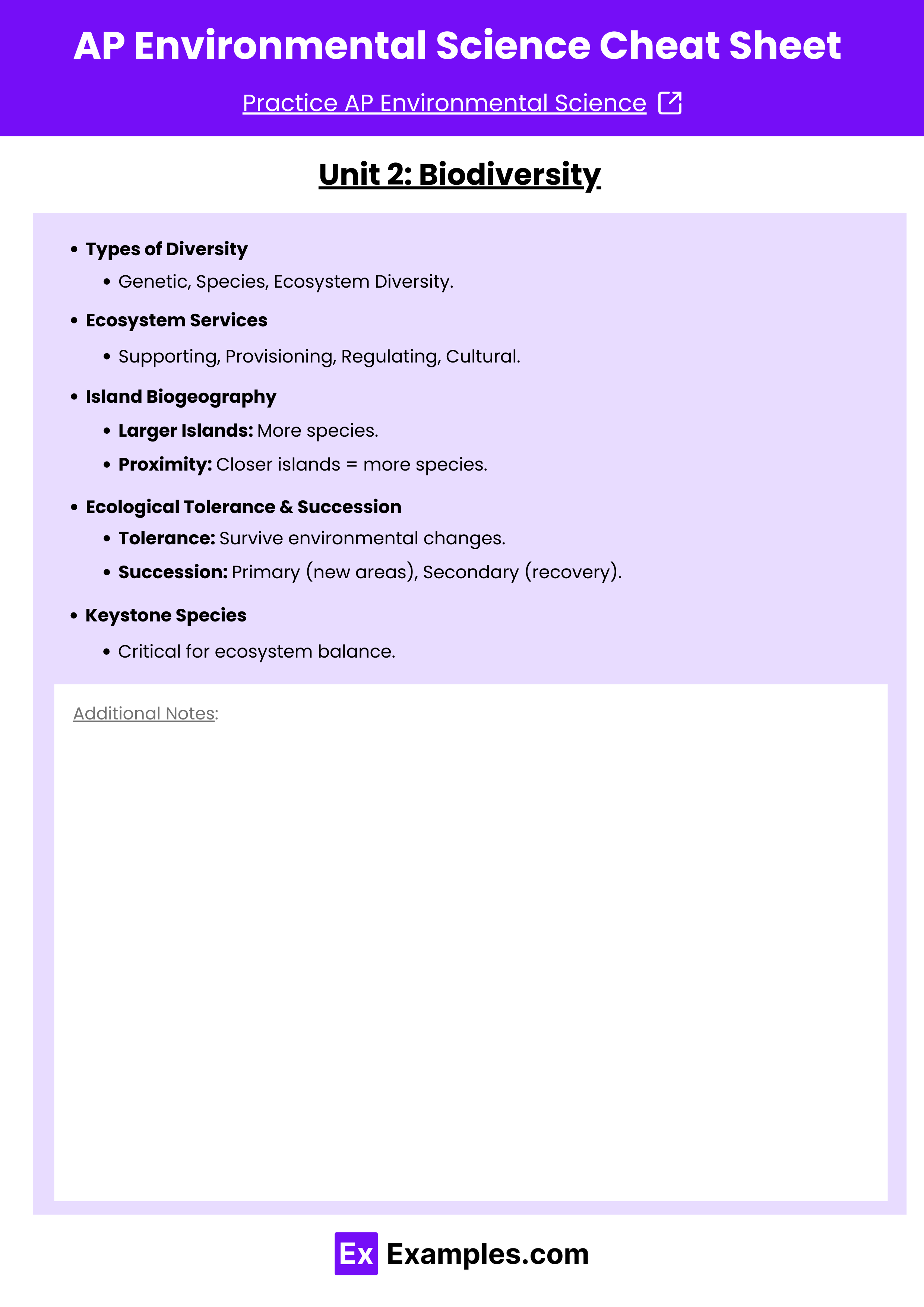
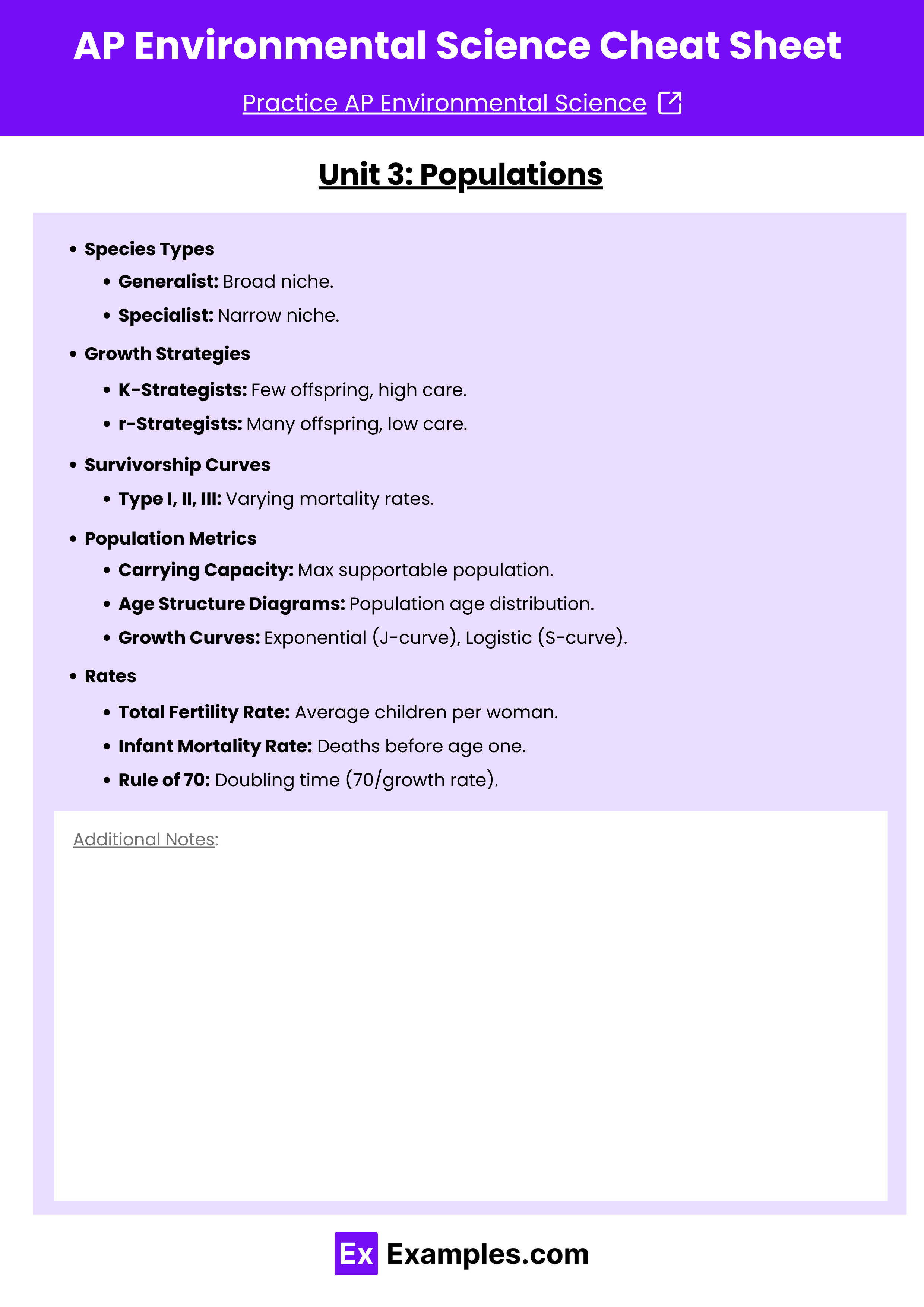
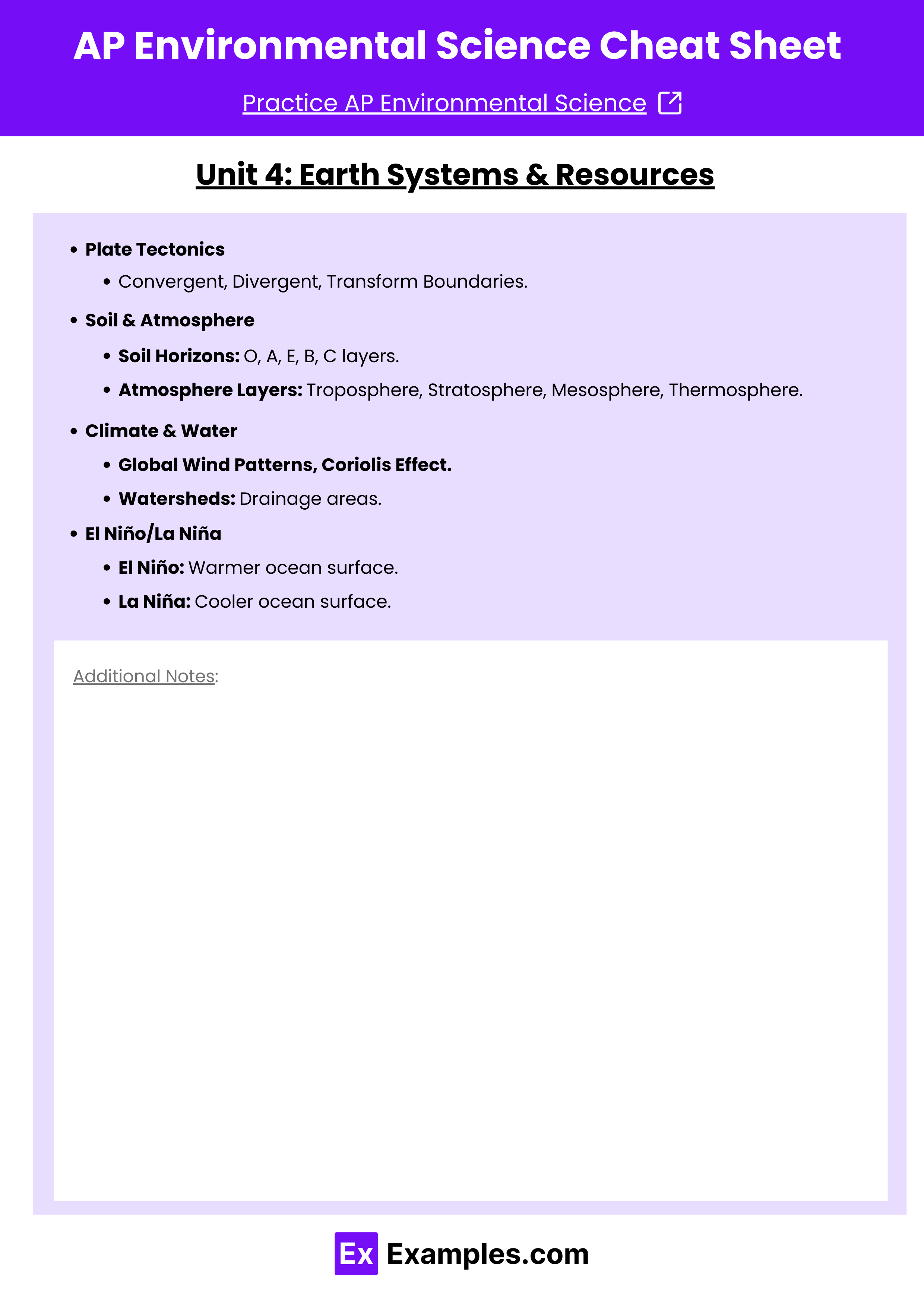
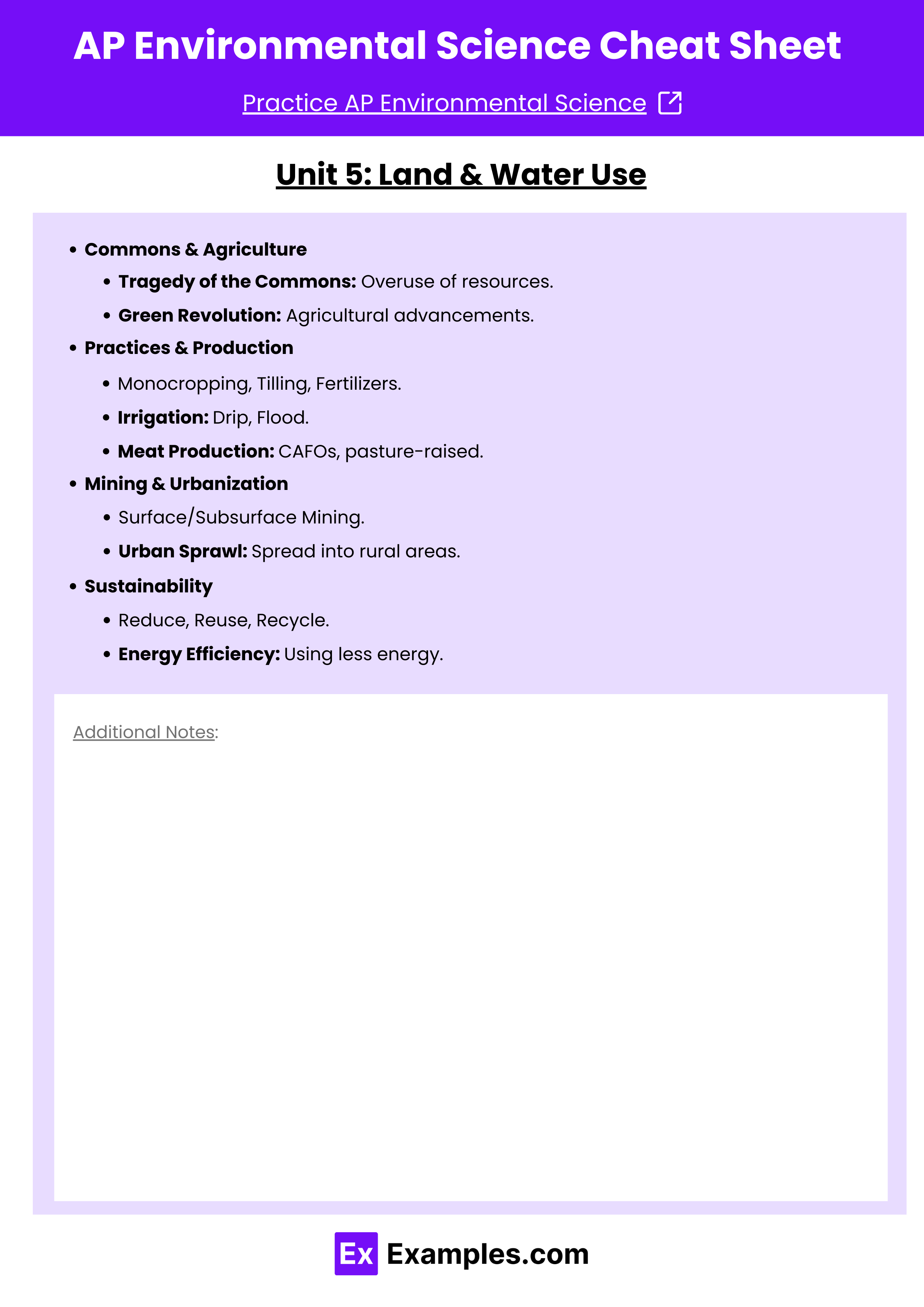
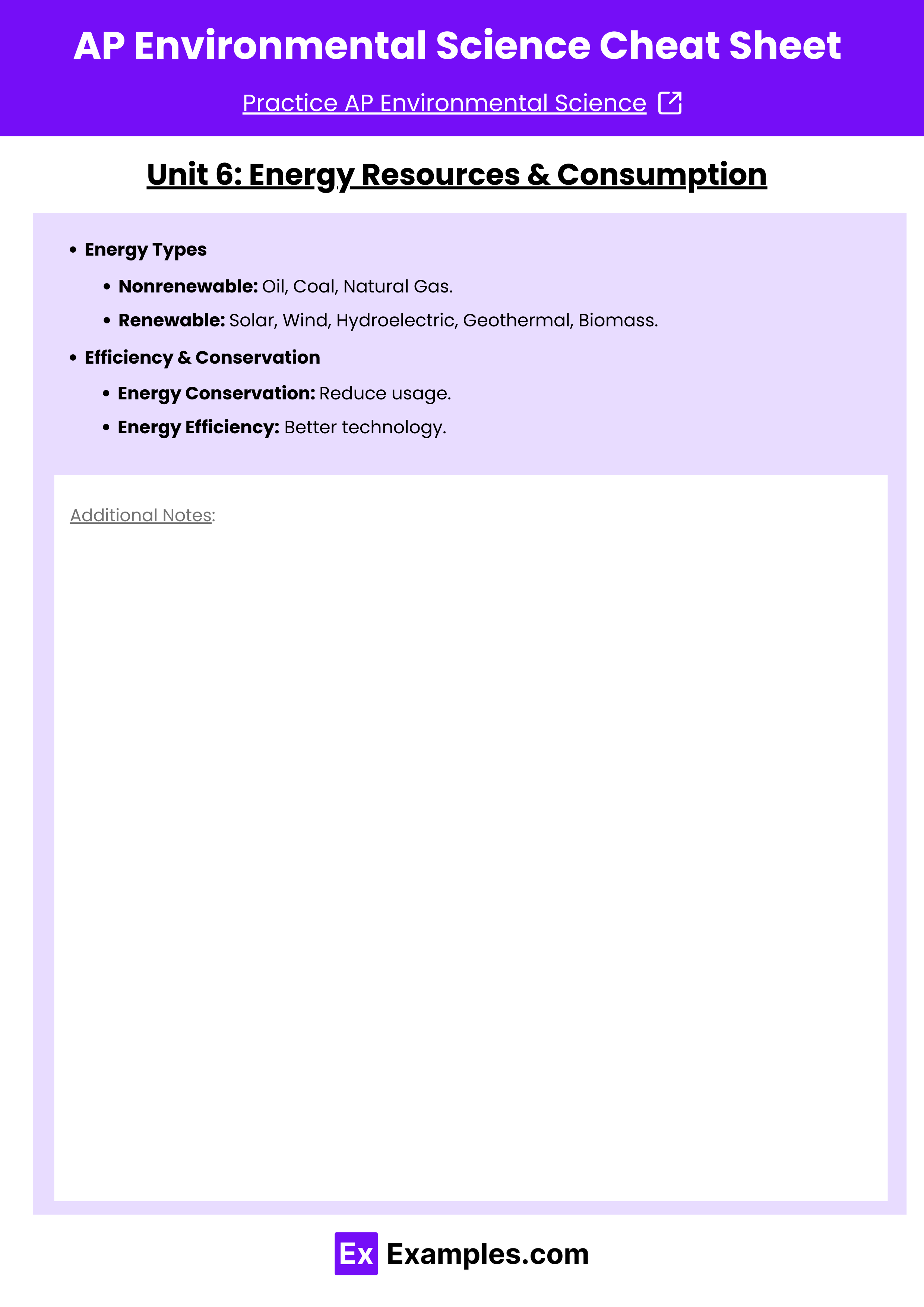
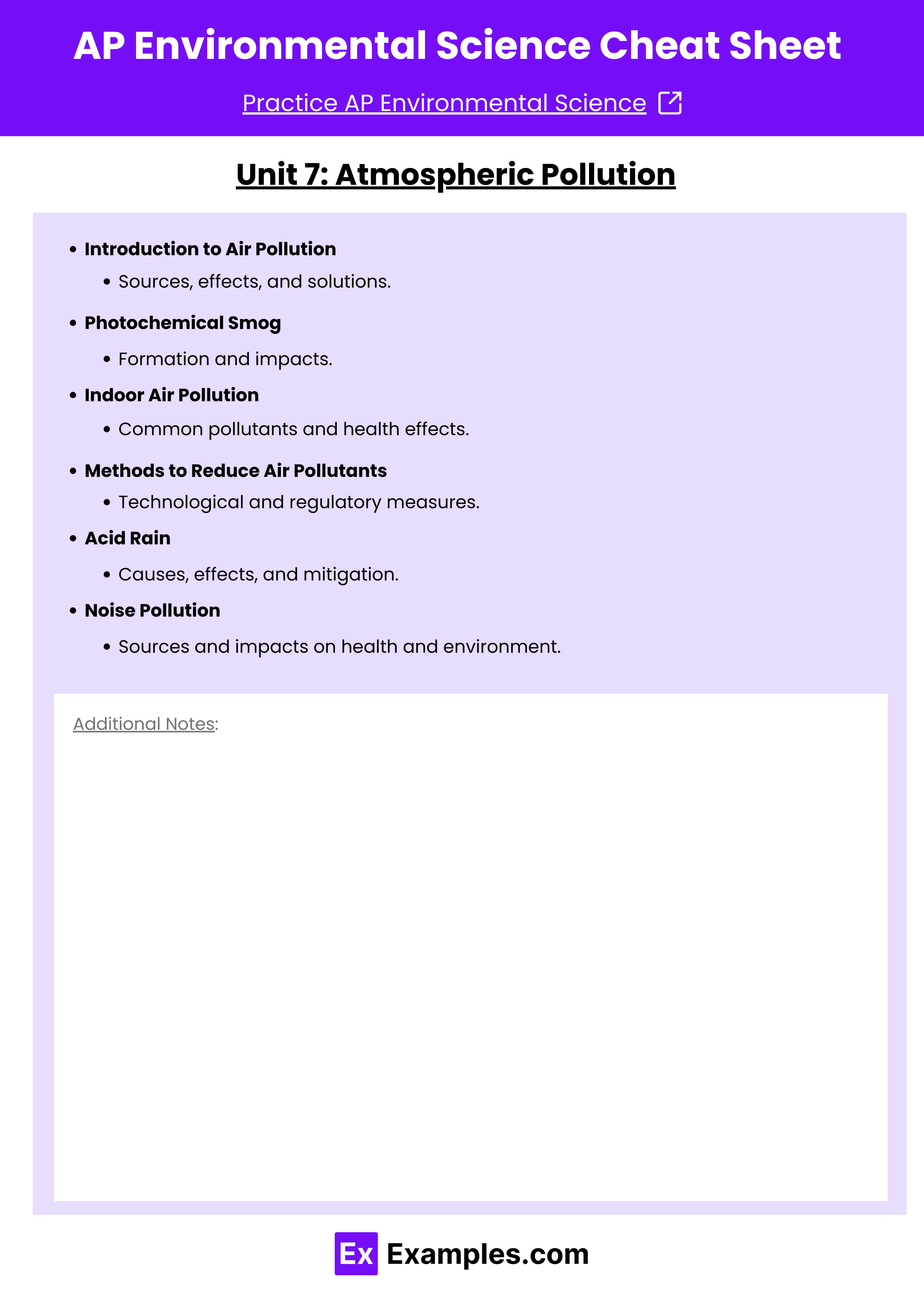
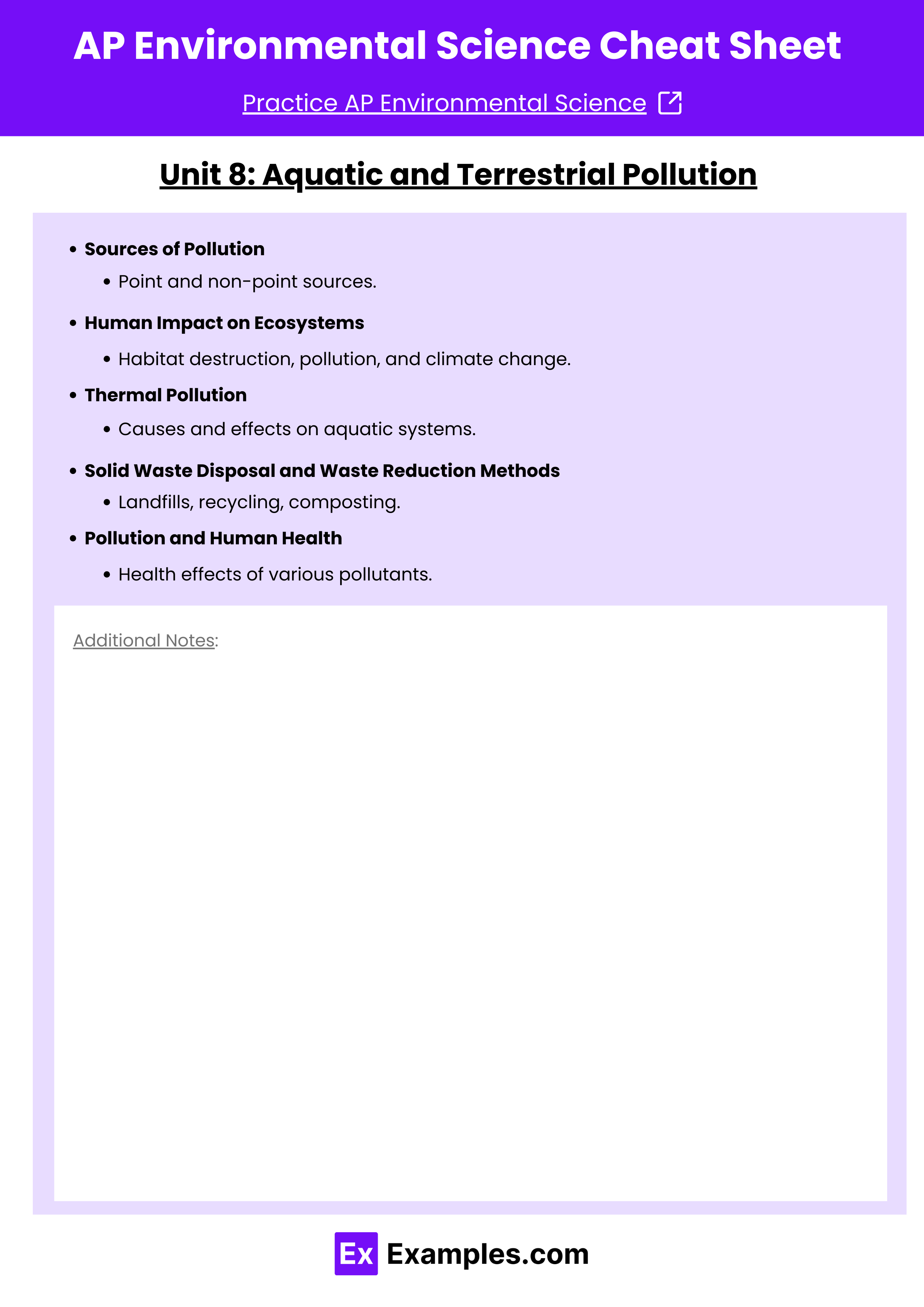
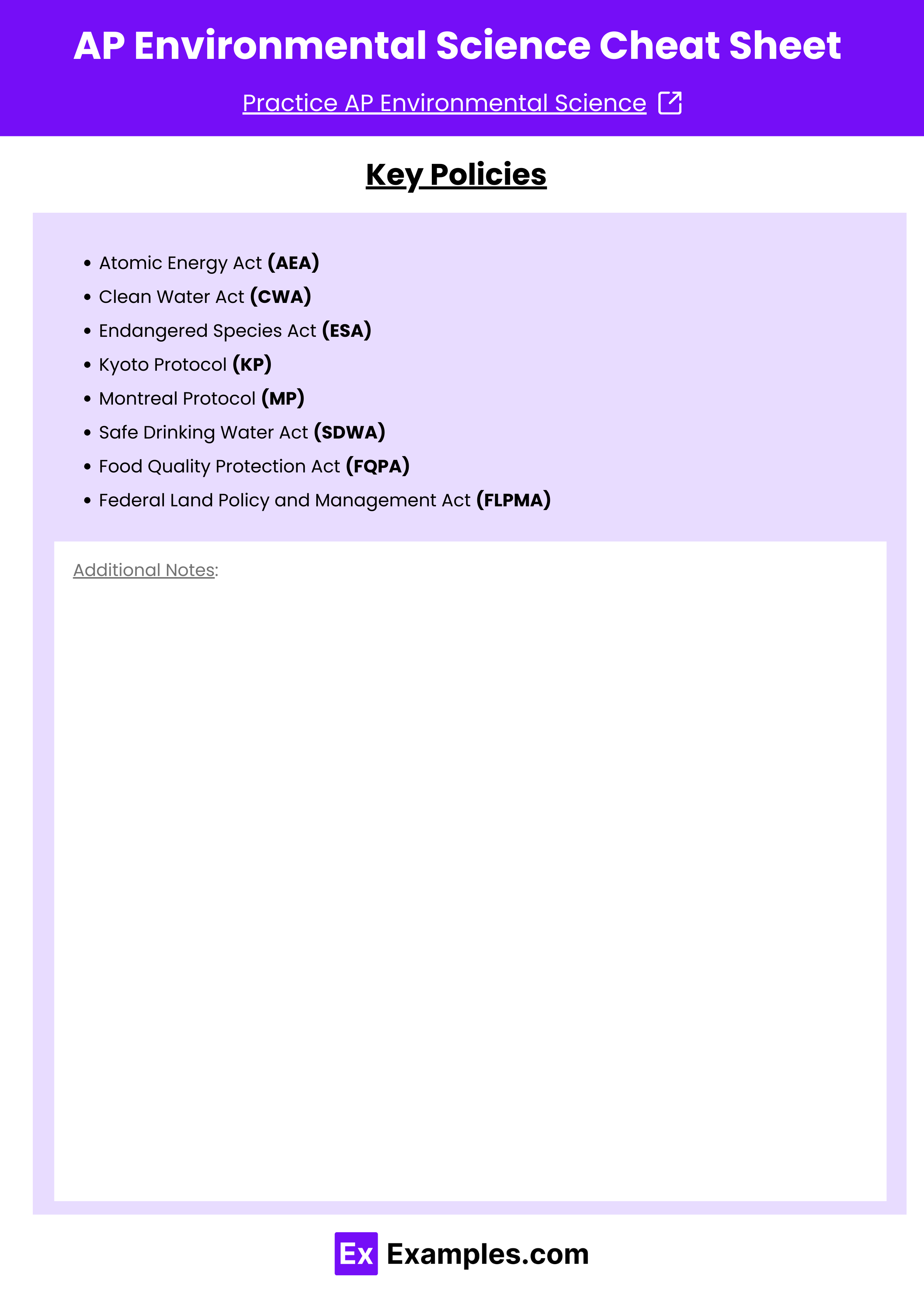
Unit 1: Ecosystems
Ecological Relationships
- Predator-Prey: One hunts another.
- Mutualism: Both benefit.
- Commensalism: One benefits, other unaffected.
- Parasitism: One benefits, one harmed.
- Competition: Compete for resources.
Biomes
- Terrestrial: Tundra, Taiga, Temperate Forests, Tropical Rainforests, Grasslands, Savanna, Desert.
- Aquatic: Coral Reefs, Estuaries, Ponds, Lakes, Rivers, Oceans.
Cycles
- Carbon Cycle: Photosynthesis, respiration.
- Nitrogen Cycle: Fixation, nitrification, denitrification.
- Phosphorus Cycle: Rocks, soil.
- Hydrologic Cycle: Precipitation, evaporation.
Productivity & Trophic Levels
- GPP: Total energy captured.
- NPP: Energy after plant use.
- Trophic Levels: Producers, Consumers, Decomposers.
- 10% Rule: Energy transfer efficiency.
Food Web
- Flow of energy and nutrients.
Unit 2: Biodiversity
Types of Diversity
- Genetic, Species, Ecosystem Diversity.
Ecosystem Services
- Supporting, Provisioning, Regulating, Cultural.
Island Biogeography
- Larger Islands: More species.
- Proximity: Closer islands = more species.
Ecological Tolerance & Succession
- Tolerance: Survive environmental changes.
- Succession: Primary (new areas), Secondary (recovery).
Keystone Species
- Critical for ecosystem balance.
Unit 3: Populations
Species Types
- Generalist: Broad niche.
- Specialist: Narrow niche.
Growth Strategies
- K-Strategists: Few offspring, high care.
- r-Strategists: Many offspring, low care.
Survivorship Curves
- Type I, II, III: Varying mortality rates.
Population Metrics
- Carrying Capacity: Max supportable population.
- Age Structure Diagrams: Population age distribution.
- Growth Curves: Exponential (J-curve), Logistic (S-curve).
Rates
- Total Fertility Rate: Average children per woman.
- Infant Mortality Rate: Deaths before age one.
- Rule of 70: Doubling time (70/growth rate).
Unit 4: Earth Systems & Resources
Plate Tectonics
- Convergent, Divergent, Transform Boundaries.
Soil & Atmosphere
- Soil Horizons: O, A, E, B, C layers.
- Atmosphere Layers: Troposphere, Stratosphere, Mesosphere, Thermosphere.
Climate & Water
- Global Wind Patterns, Coriolis Effect.
- Watersheds: Drainage areas.
El Niño/La Niña
- El Niño: Warmer ocean surface.
- La Niña: Cooler ocean surface.
Unit 5: Land & Water Use
Commons & Agriculture
- Tragedy of the Commons: Overuse of resources.
- Green Revolution: Agricultural advancements.
Practices & Production
- Monocropping, Tilling, Fertilizers.
- Irrigation: Drip, Flood.
- Meat Production: CAFOs, pasture-raised.
Mining & Urbanization
- Surface/Subsurface Mining.
- Urban Sprawl: Spread into rural areas.
Sustainability
- Reduce, Reuse, Recycle.
- Energy Efficiency: Using less energy.
Unit 6: Energy Resources & Consumption
Energy Types
- Nonrenewable: Oil, Coal, Natural Gas.
- Renewable: Solar, Wind, Hydroelectric, Geothermal, Biomass.
Efficiency & Conservation
- Energy Conservation: Reduce usage.
- Energy Efficiency: Better technology.
Unit 7: Atmospheric Pollution
Introduction to Air Pollution
- Sources, effects, and solutions.
Photochemical Smog
- Formation and impacts.
Indoor Air Pollution
- Common pollutants and health effects.
Methods to Reduce Air Pollutants
- Technological and regulatory measures.
Acid Rain
- Causes, effects, and mitigation.
Noise Pollution
- Sources and impacts on health and environment.
Unit 8: Aquatic and Terrestrial Pollution
Sources of Pollution
- Point and non-point sources.
Human Impact on Ecosystems
- Habitat destruction, pollution, and climate change.
Thermal Pollution
- Causes and effects on aquatic systems.
Solid Waste Disposal and Waste Reduction Methods
- Landfills, recycling, composting.
Pollution and Human Health
- Health effects of various pollutants.
Key Policies
- Atomic Energy Act (AEA), Clean Water Act (CWA), Endangered Species Act (ESA), Kyoto Protocol (KP), Montreal Protocol (MP), Safe Drinking Water Act (SDWA), Food Quality Protection Act (FQPA), Federal Land Policy and Management Act (FLPMA).

